“What’s the point of protesting? You’re not gonna win!” Recent activism successes in Brisbane
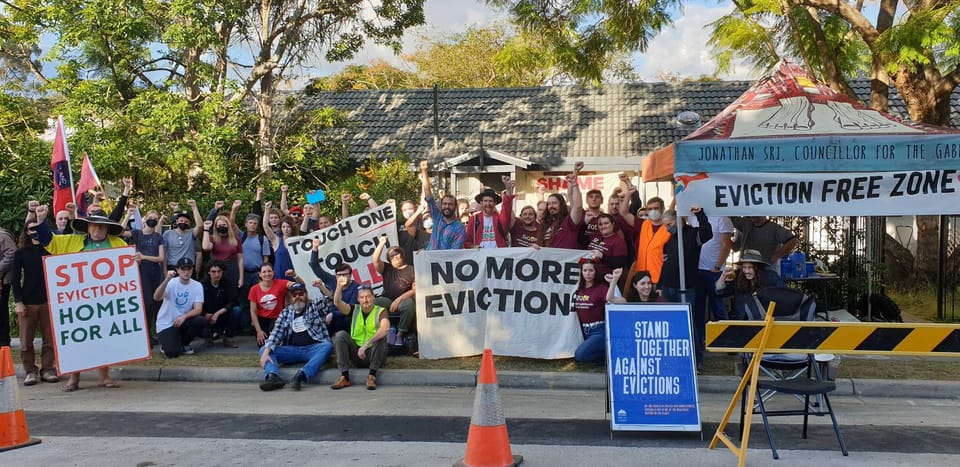
Activists generally aren't very good at celebrating our victories. In part, this is because in such an unjust and unsustainable world, further improvements and bigger transformations are inevitably always needed, and it can feel silly to go on and on about comparatively minor wins. Sometimes, celebrating interim or partial victories can even be unhelpfully demotivating, because saying “yay we’ve won!” can signal to supporters that they no longer need to spend time and energy campaigning for change.
But in a world that continually tells people that protest and political organising is pointless, where conservative forces actively promote a sense of apathy and powerlessness among the most exploited and oppressed of us, recognising and remembering the victories is important. This is crucial so we can learn from them, but also so more people can see the value of standing up and fighting for change.
From abortion rights to same-sex marriage to the (partial) decriminalisation of cannabis, there are plenty of positive changes that have only come about thanks to years of protest and activism. Sometimes we pay more attention to activism for positive change in other parts of the world, or in the more distant past, but it’s good to remember that we’ve also had plenty of local victories in and around Brisbane in the last few years.
For those who might be at risk of forgetting, here’s a grab-bag of other recent campaigns of various sizes and styles that have secured tangible victories, even without much support from either of Queensland's two major parties. This is just a small sample of the much longer list of community wins I could point to. Hopefully it’s a useful resource to share with people the next time some idiot says “there’s no point protesting!” or “it’s already been approved – it’s too late to stop it.”
Blocking roads achieves safety improvements
In a city where car-centric transport planning is still the norm, and both Labor and the LNP continue to under-invest in pedestrian and cycling infrastructure, it's very difficult to get funding allocated to road safety projects that slow down motorists or take space away from cars. But over the years, I've been involved in several successful campaigns where disruptive protests that blocked the road helped elevate an issue so that the easiest option for the political establishment was to allocate funding or accommodate active travel advocates' demands.
These protests include the critical mass bike rides that built public pressure to fund bike lanes on Stanley St and Annerley Rd in Woolloongabba, and peak-hour street occupations of Montague Rd in West End that helped secure funding for traffic lights at the intersection with Victoria Street.
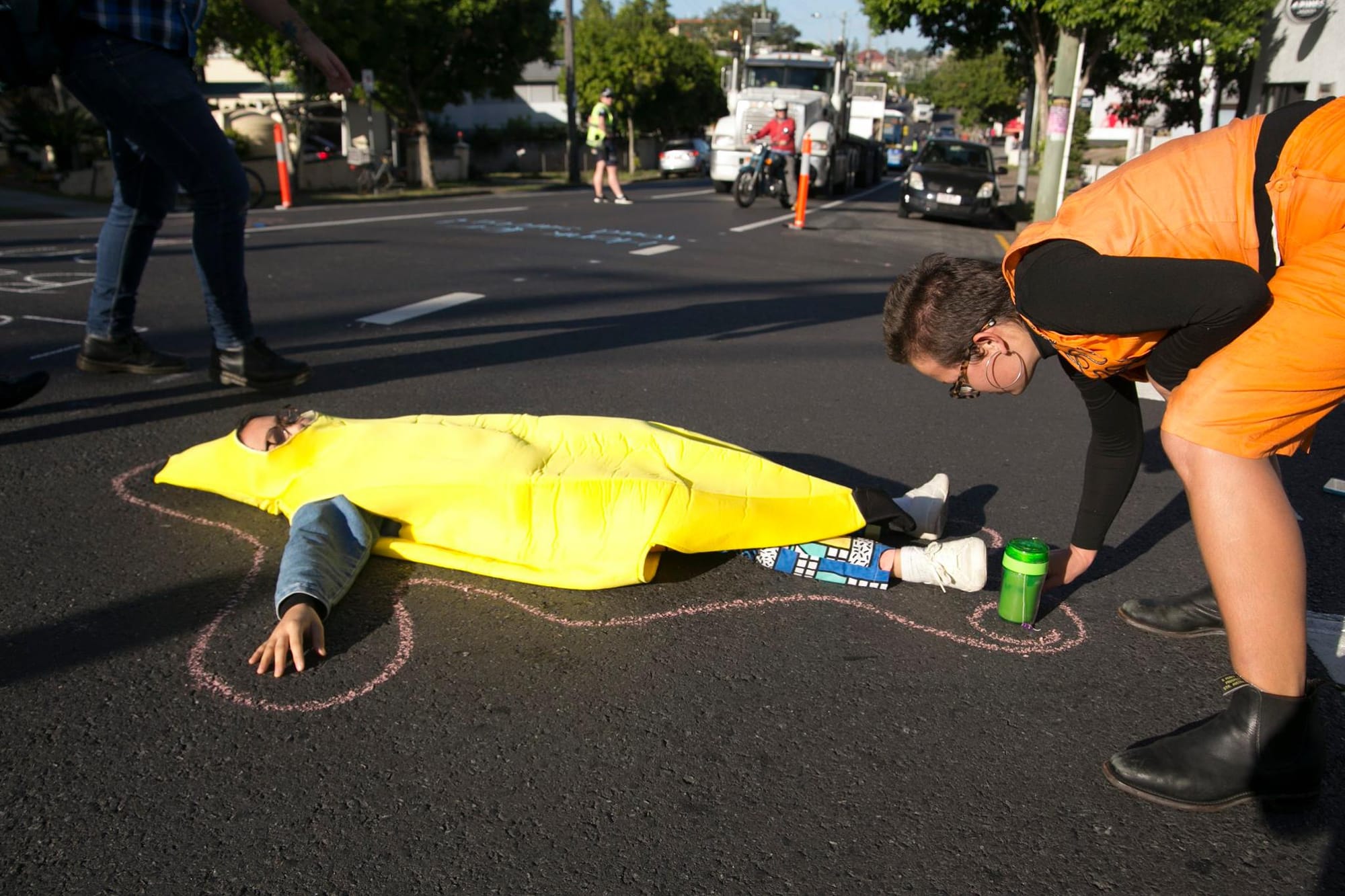
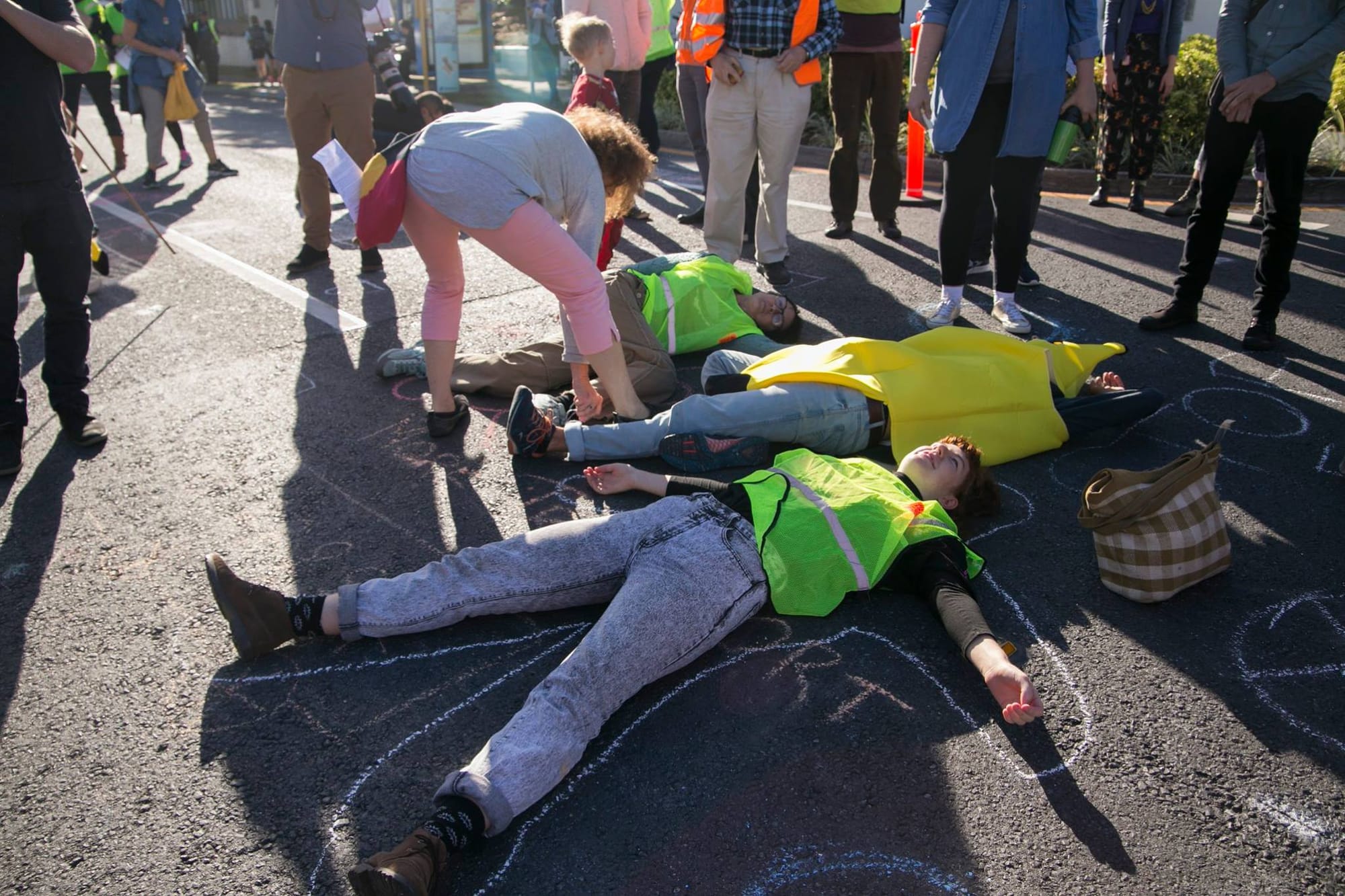
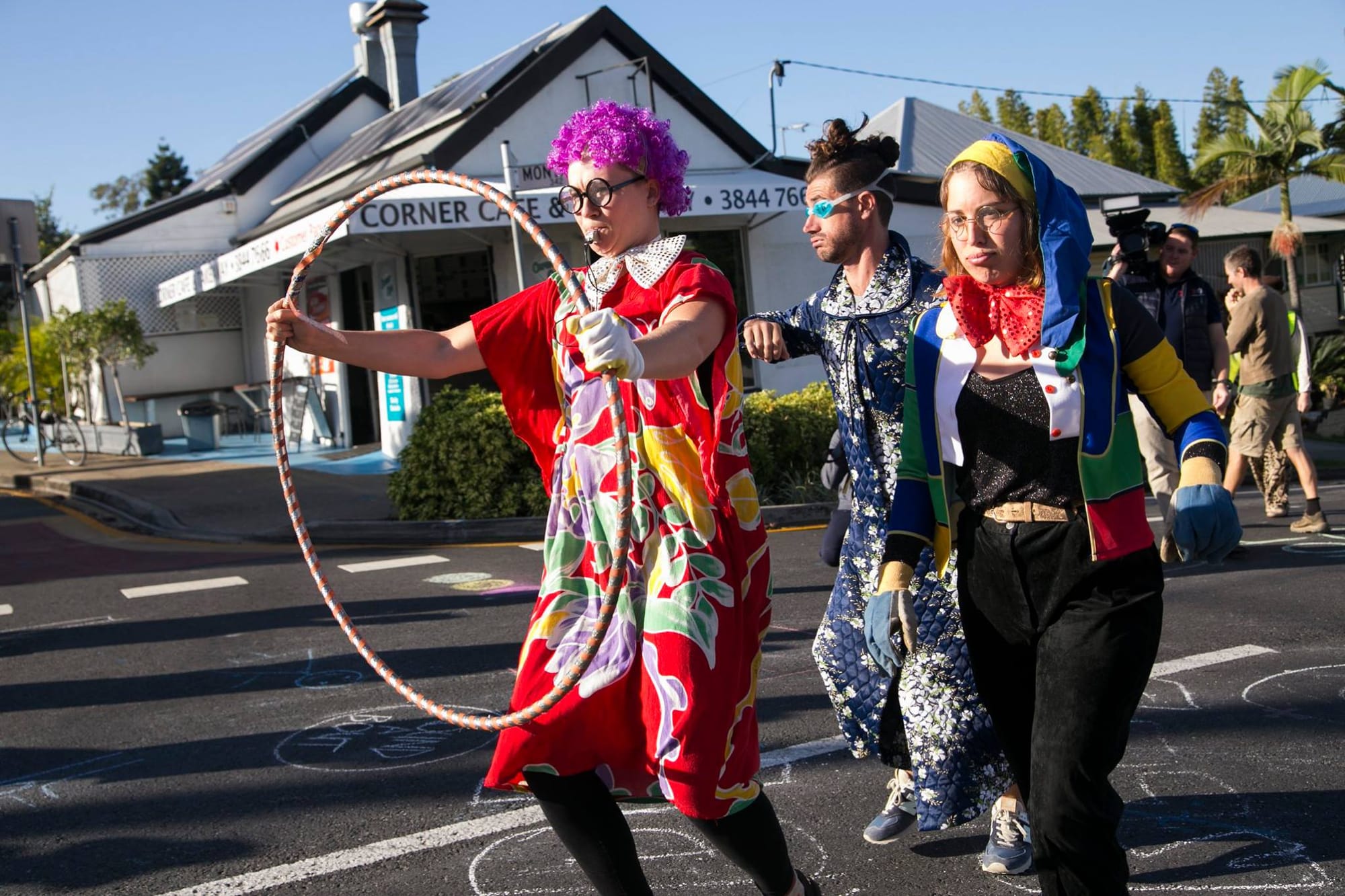
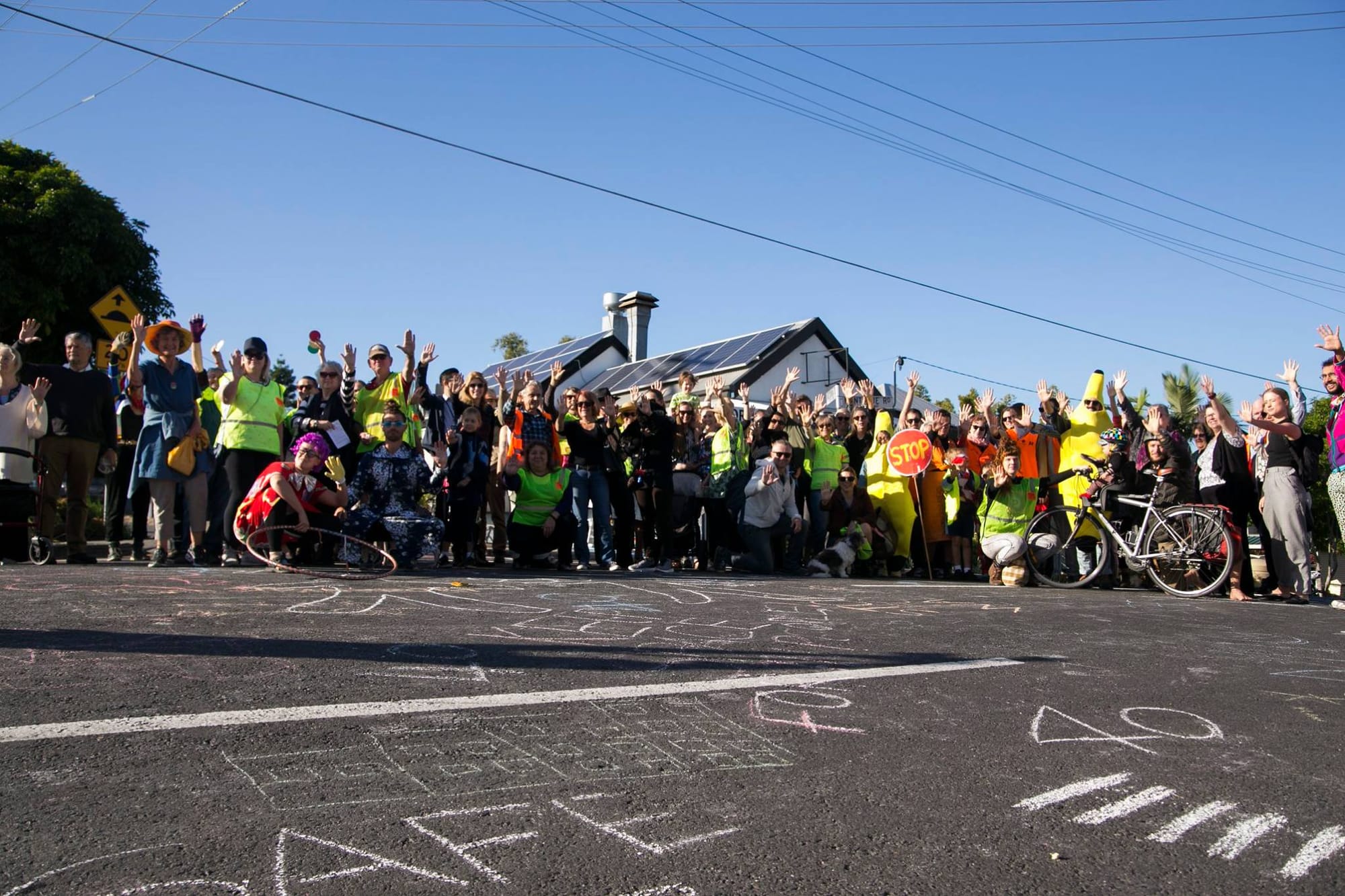
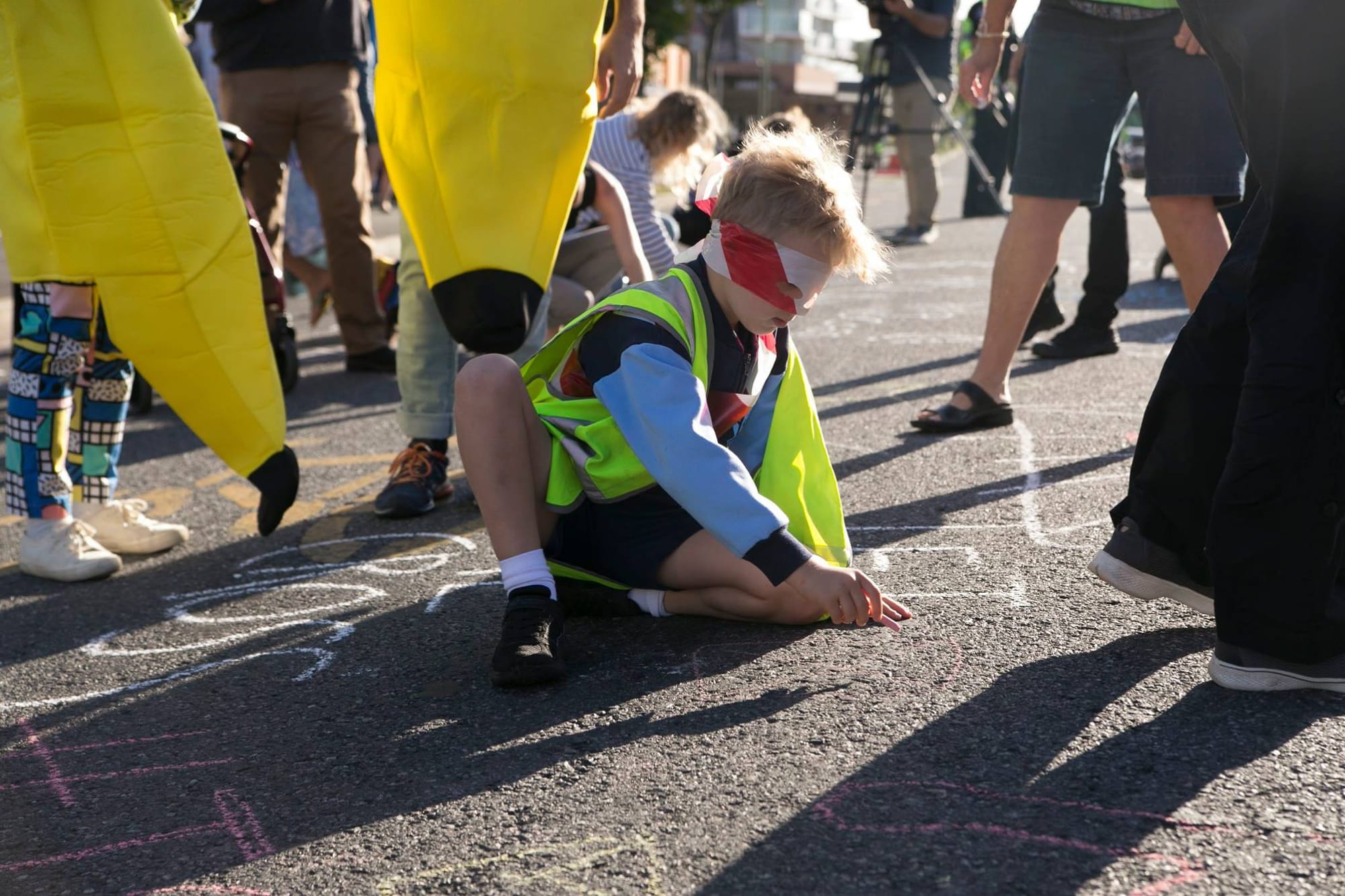
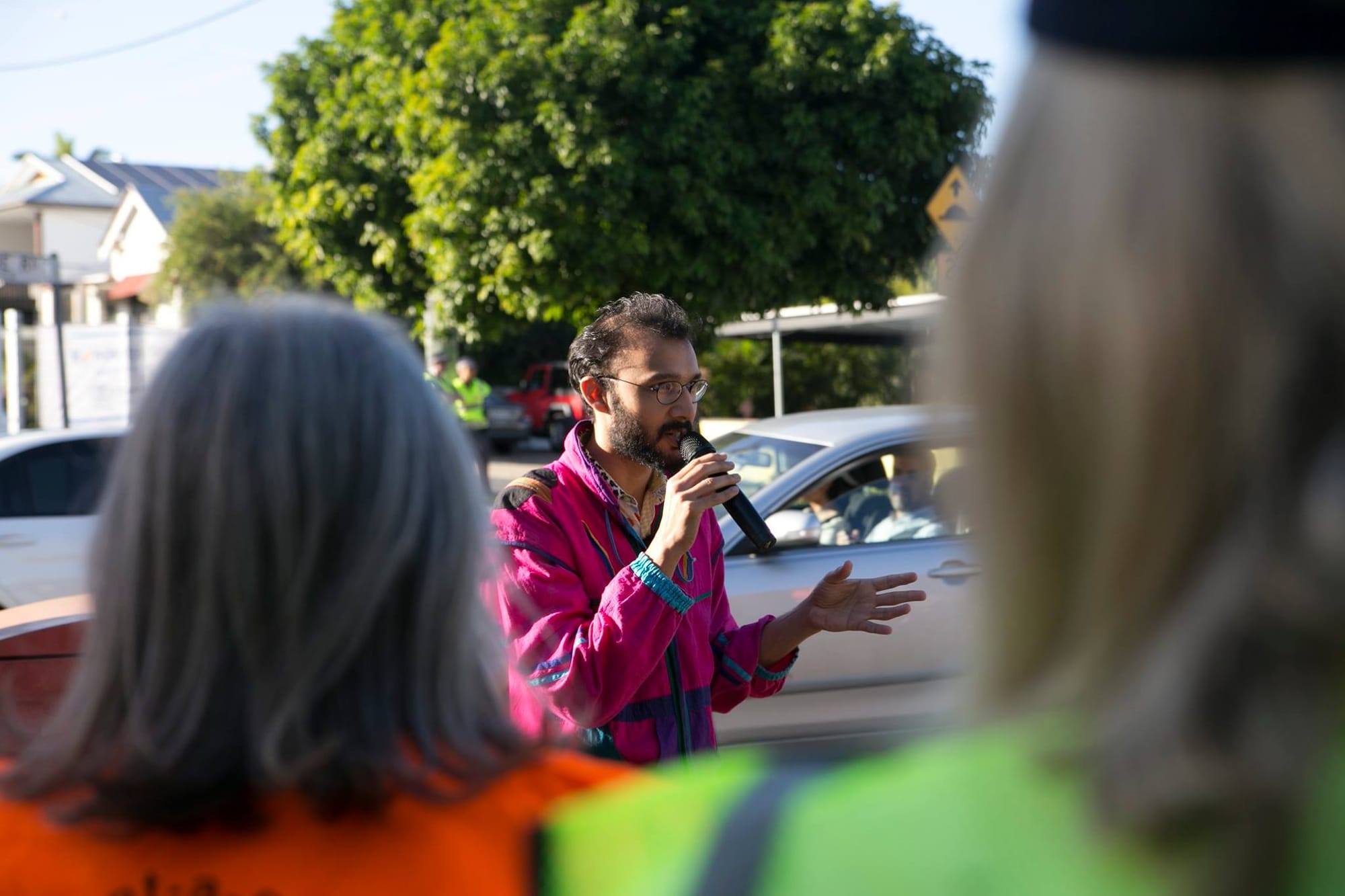
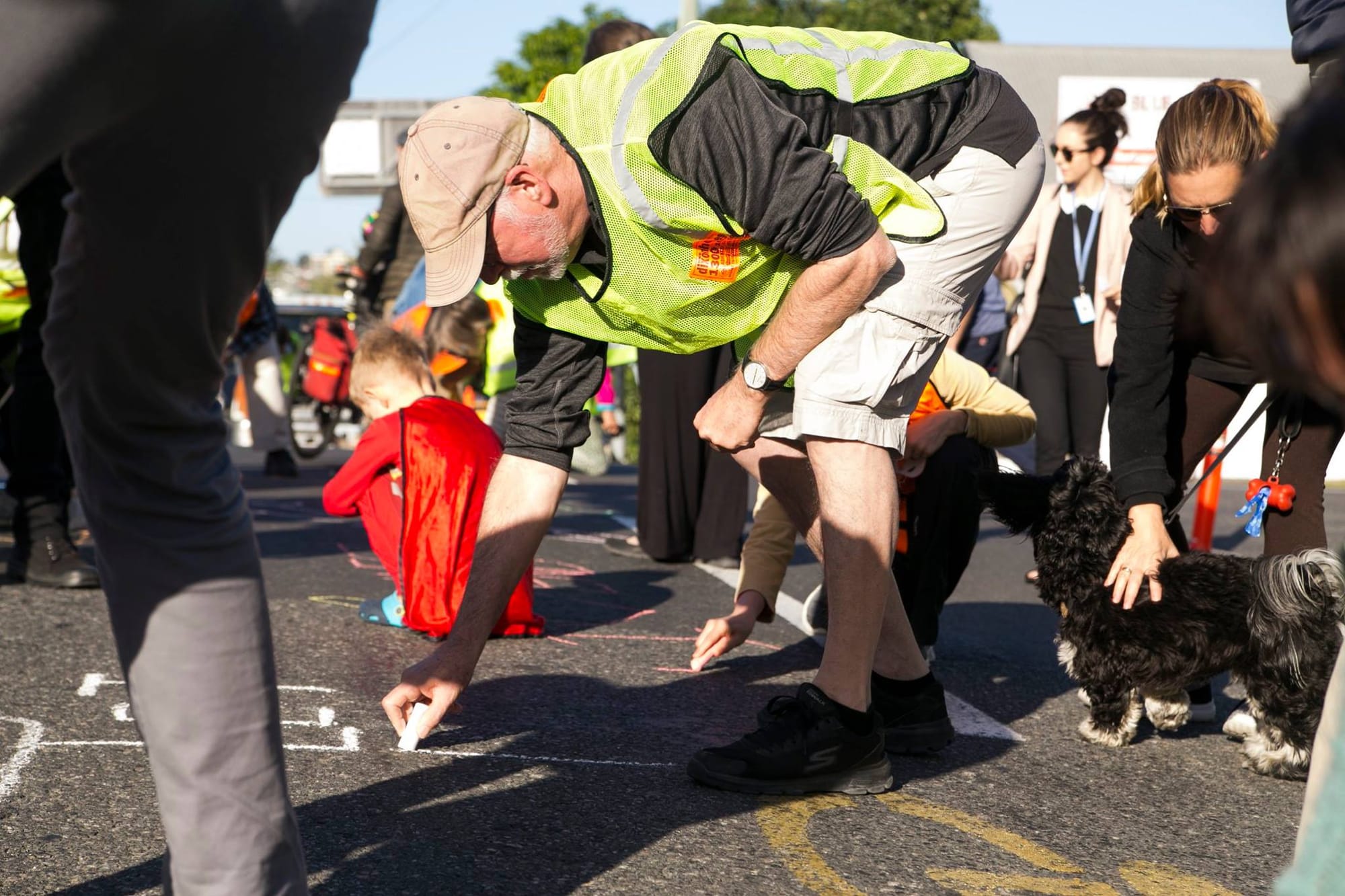
On 15 May, 2018, about 60 West End residents repeatedly blocked Montague Rd during peak hour for a road safety protest, which led to Brisbane City Council allocating funding to install traffic lights at the notoriously dangerous Victoria St intersection (near the Aldi)
One of the highest-profile such actions was the mass cyclist die-in of 2017 on Victoria Bridge between South Bank and the CBD. Dozens of cyclists lay down on the car lanes of the bridge on a weekday morning to protest the council's decision not to include separated bike lanes as part of the bridge's redesign for the Brisbane Metro project.
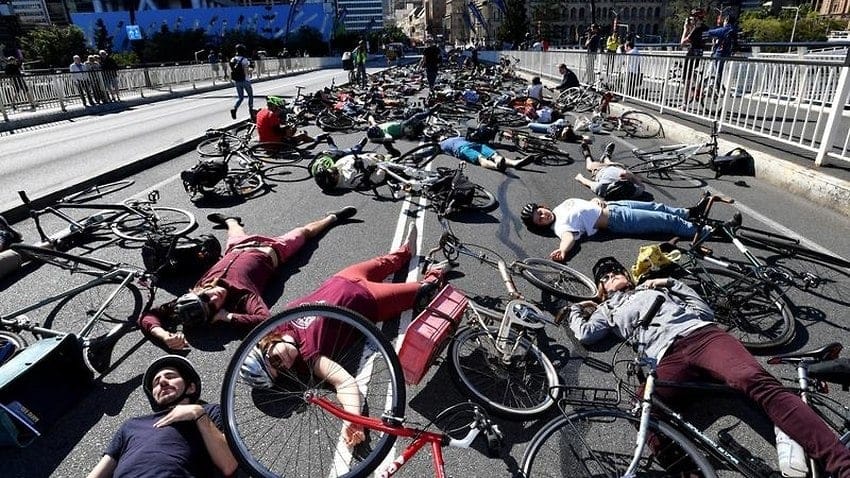
The action generated a lot of controversy and public debate, polarising the community. The strategic thinking behind such actions wasn't that we were trying to win over everyone – we were intentionally creating a political crisis and causing so much disruption and sensation that the city's leaders couldn't afford to continue ignoring cyclists' demands.
It worked.
Until the die-in action, many cyclists across Brisbane hadn't even heard that the bridge redesign would ignore the growing need for bike lanes, so the protest helped generate awareness among a much larger constituency, who began making submissions and writing angry letters. It also demonstrated to the city council how serious we were about the issue, prompting the deputy mayor to ask transport planners to look again at the Brisbane Metro designs to see if bike lanes could be accommodated.
Not long after the protest, the council announced a major change to bridge redesign plans – safe, separated bike lanes would be included. We got exactly what we were calling for. Every time I ride over this bridge in the coming years, I'll think about that protest and how glad I am that we had the courage to ignore the haters, stick our necks out and block traffic.
Saving Mt Coot-tha from a tree-clearing zipline
Telling people "It's already been approved" is an easy way for governments and corporations to demobilise opposition to shitty and unjust projects and policies, but just because something already has the green light doesn't mean it's too late to fight.
The struggle to protect Mt Coot-tha seems significant to me because it was the first community campaign in years that activated large numbers of people from across Brisbane regarding a council project whose impacts were localised to one part of the city. It also marked the first time that the Queensland LNP demonstrated serious concerns about losing support to the Greens on environmental issues, and signalled a lasting shift in local Brisbane politics, after which the Liberals put a lot more energy into greenwashing and trying to convince voters that their environmental credentials were much stronger than they actually are.
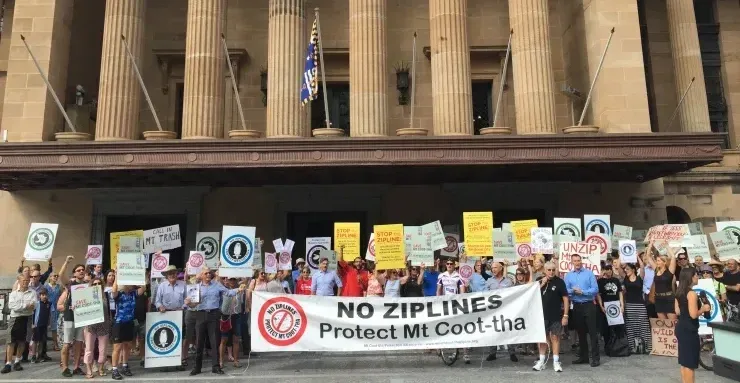
Proposals for a commercially-operated recreational zipline down Mt Coot-tha were first confirmed by LNP Mayor Graham Quirk in April 2017 (it had been floated less concretely for a couple years before that). The project would have necessitated clearing hundreds – possibly thousands – of trees, and was an environmentally destructive commercial venture within a public green space. It would likely also have opened the door to further privatisation and commercialisation of the reserve. With some solid leadership from the office of Greens MP for Maiwar, Michael Berkman, local residents joined with environmentalists from across the city to organise submission-writing campaigns, public meetings and rallies.
Protests escalated after the Queensland Labor government's State Assessment Referral Agency gave its support for the zipline in December 2018. I remember speaking at a large, well-attended rally in King George Square in February 2019 where hundreds of residents (including quite a few grey-haired, upper-middleclass types who might previously have voted LNP) marched right up to the doors of city hall chanting “can you hear the people shouting?” That felt like a significant turning point.
When the LNP finally announced they were cancelling the project in April 2019, the tendering process had long been completed and contracts with a private company had already been signed, so the council ended up almost $1 million out of pocket as part of a settlement agreement to back out of it. Generally speaking, the further a project has progressed, the harder it is for community pressure to stop it. But for me, the zipline campaign is a good reminder that even after contracts are finalised, it’s not too late to fight for a win.
Kangaroo Point refugee solidarity blockade
Numerous successful community campaigns have taught me that disruptive protest works. During the covid lockdowns of 2020, asylum seekers in indefinite immigration detention started protesting from their prison-hotel on Main St in Kangaroo Point, attracting support from allies out in the wider community. Despite violent police crackdowns and strict, draconian rules limiting the right to peaceful protest, hundreds of people (mostly younger adults) sustained a 24-hour presence on the footpaths around the hotel for several months.
While many other groups were advocating for refugee rights via various channels and tactics, the Kangaroo Point campaign itself put little effort into petitions and letter-writing, focusing primarily on disruptive civil disobedience tactics including driveway blockades. Eventually, the inconvenience and political pressure that the campaign generated contributed to many of the men who were held in detention being released into the community on bridging visas.
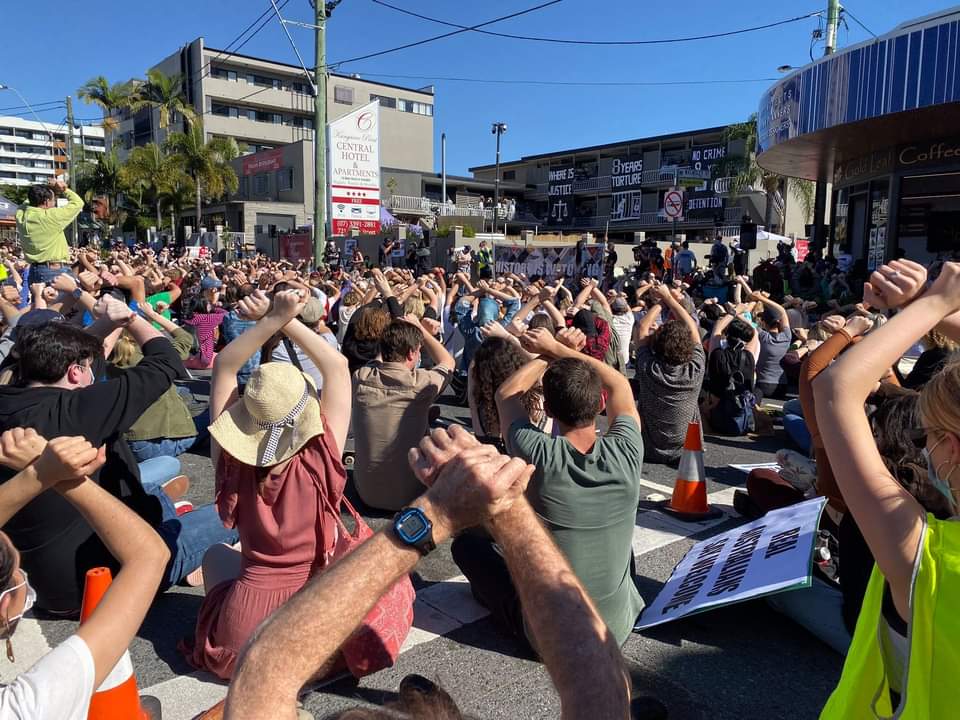
I can still remember one police commander, the notorious Michelle Piket, telling me on the footpath outside of the hotel that by supporting the protests I was “giving people false hope.” Turns out she was wrong. The government said those men would never be able to live in Australia. A few months later, I was playing soccer in the park with some of them.
Of course, none of us wanted to celebrate this as a decisive victory, because the Australian government’s broader racist oppression of refugees continues, and the men who were released still faced numerous challenges, including not being provided welfare payments or housing support to help them transition into the community. They still don’t have permanent settlement rights, even after 7+ years in Australian immigration detention and now living out in the community for almost four years.
Nevertheless, the Kangaroo Point blockade stands as a powerful example of how an assertive civil disobedience campaign – initiated by the detainees themselves – finally cracked through and helped rupture the status quo in a context where years of non-confrontational lobbying and advocacy from NGOs (who were very resistant to the use of disruptive non-violent direct action) had not.
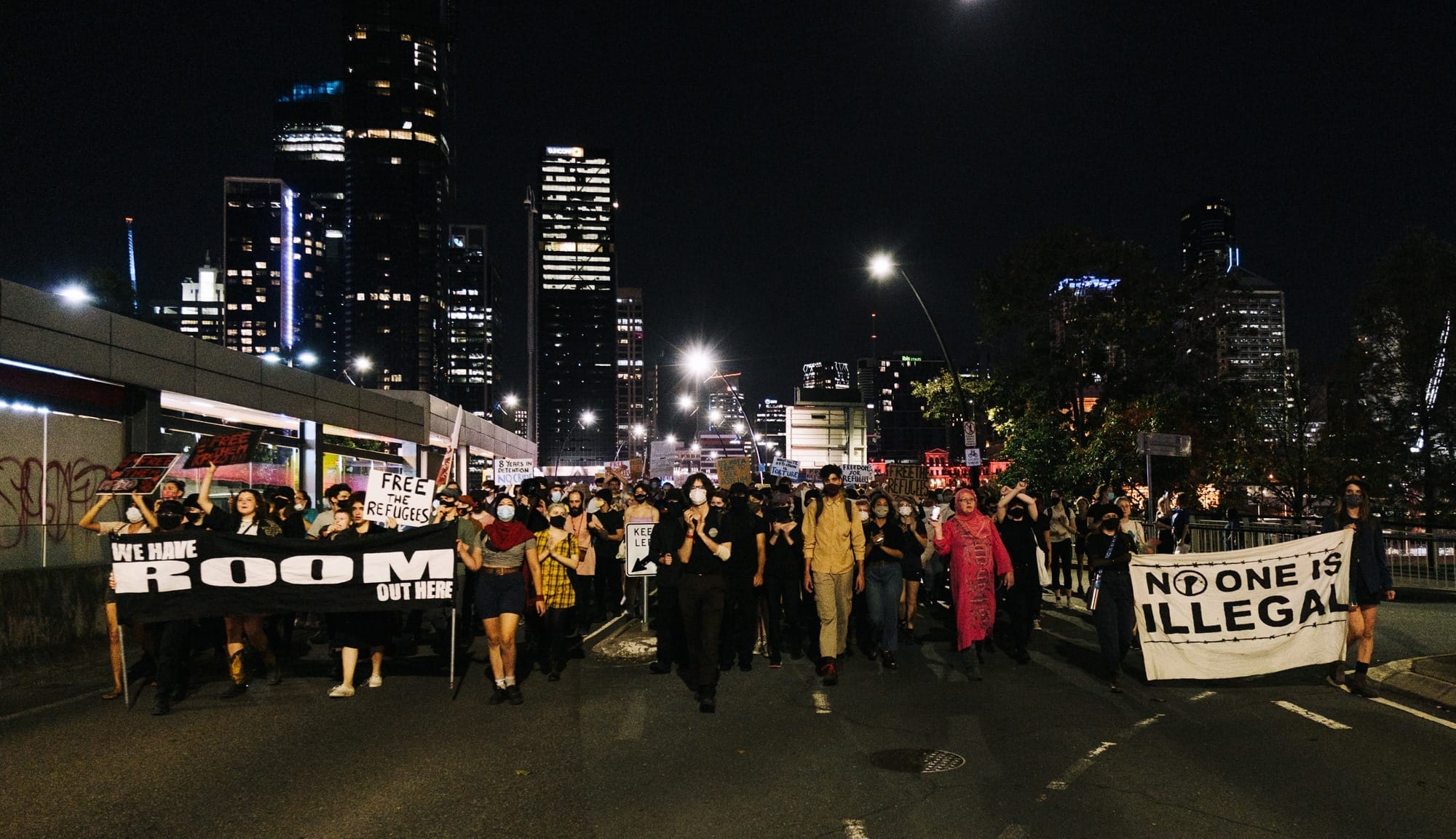
I should note though that other parallel tactics and pressure points such as court challenges also played a very significant role in securing the men’s eventual release. Blockading alone didn’t win this; but repeated protest marches and snap blockades – even in a context where gathering in groups to protest was technically illegal – were a key ingredient.
Establishing urban farms without formal approval
While a lot of community activism necessarily tends to focus on preventing destructive projects, we can also point to plenty of generative community development initiatives and campaigns that have created something new using forms of direct action and civil disobedience.
From 2020 onwards, a Brissie-based crew called Growing Forward started establishing new urban farming plots across the inner-south side in council parks and vacant state government-owned blocks (key organisers are at pains to emphasise that these projects are more than ‘just’ community gardens and are a contemporary example of reclaiming the commons).
These Growing Forward plots were significant in part because, although they were established with my support as the local councillor, they didn’t have formal approval from Brisbane City Council or the State Government. I’d struggled for several years to get the LNP-led city council administration to support any new community gardens being established. They invariably objected due to vaguely-articulated concerns about contaminated land, maintenance concerns, or flooding, in one case even directly lying about a proposed Kangaroo Point garden site being floodprone when it wasn’t.
In fact when we looked into it, we realised that the other older community gardens around the inner-south side, including West End’s Jane Street Community Garden, Paradise Street Garden in Highgate Hill, and The Pocket garden in Woolloongabba, were also all initially established without council permission, and had only retroactively been authorised and accepted years later.
So far, Growing Forward’s attempts to establish new commons farming plots in parts of the city where local politicians are actively opposed to them (rather than supportive like I was) have not been as successful, with plots established in suburbs like Alderley and Toowong getting torn up again by the council pretty quickly. But I still think the project stands out as a great example of proactive direct action – getting stuck in and doing something positive rather than waiting for bureaucratic approvals that might never come.
Standing up for vulnerable tenants
Fighting individual battles is important to lay the foundation for bigger struggles. Throughout my time as a city councillor, I organised several anti-eviction blockades which were successful in delaying or even completely preventing evictions into homelessness. After a few successful blockades where the government attempted to evict people from public housing or community housing, we found I had sufficient leverage that we no longer even needed to call a protest to prevent the Department of Housing evicting someone. It was enough for me to send an email and make a few phone calls threatening to organise a blockade for the department to back down and renegotiate for the tenant to remain.
One of the most significant actions was in response to a developer who proposed to evict a pensioner named Bernie from the home he'd rented in Milton for over 10 years. Because this was a private investment property rather than public housing, we didn't have as much leverage. Under Queensland's weak tenancy laws, the developer had the legal right to evict Bernie. But a succession of smaller actions and the threat of escalating to a more confrontational blockade (with associated negative media coverage) was enough to make the developer nervous and come to the negotiating table.
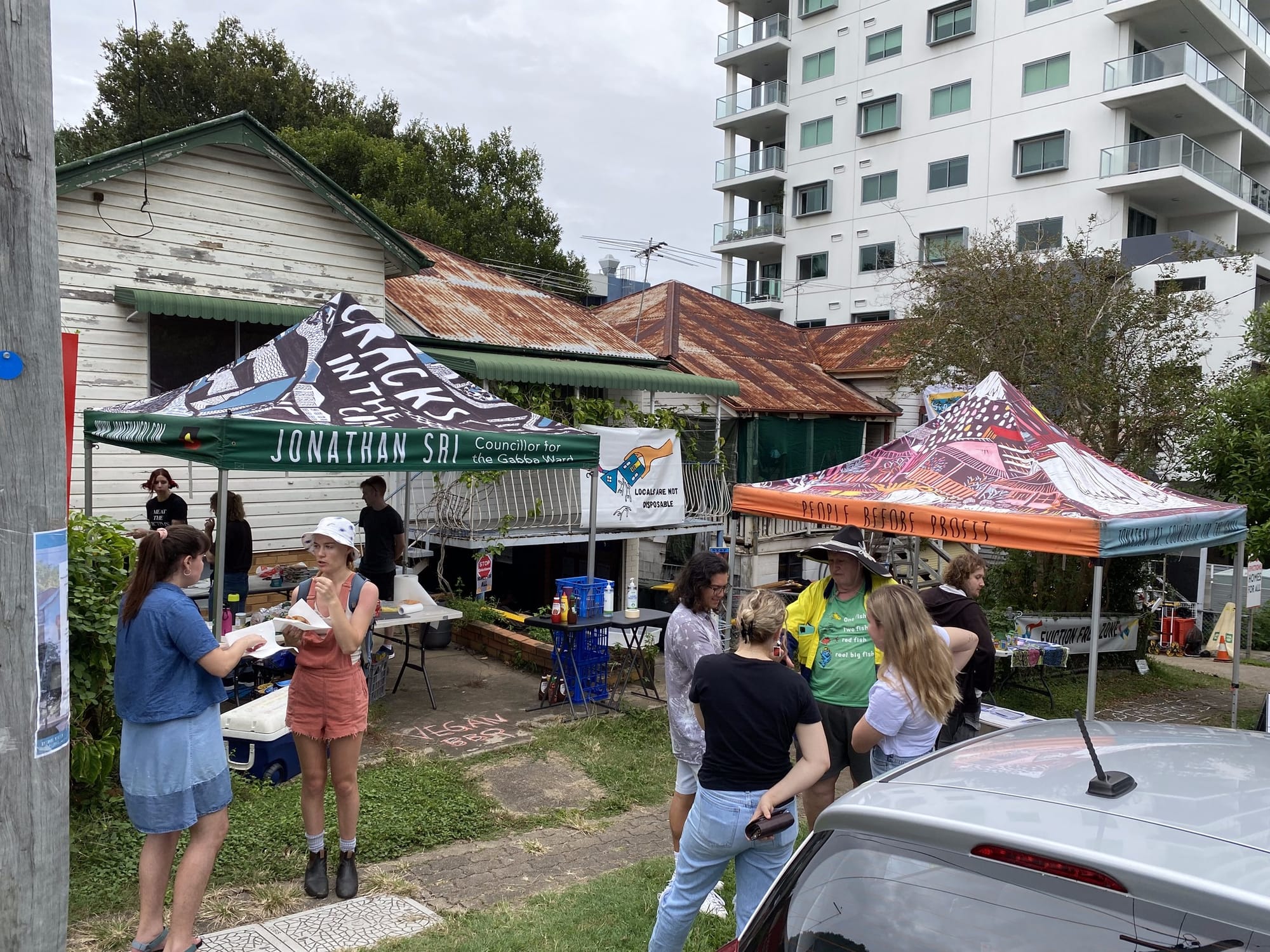
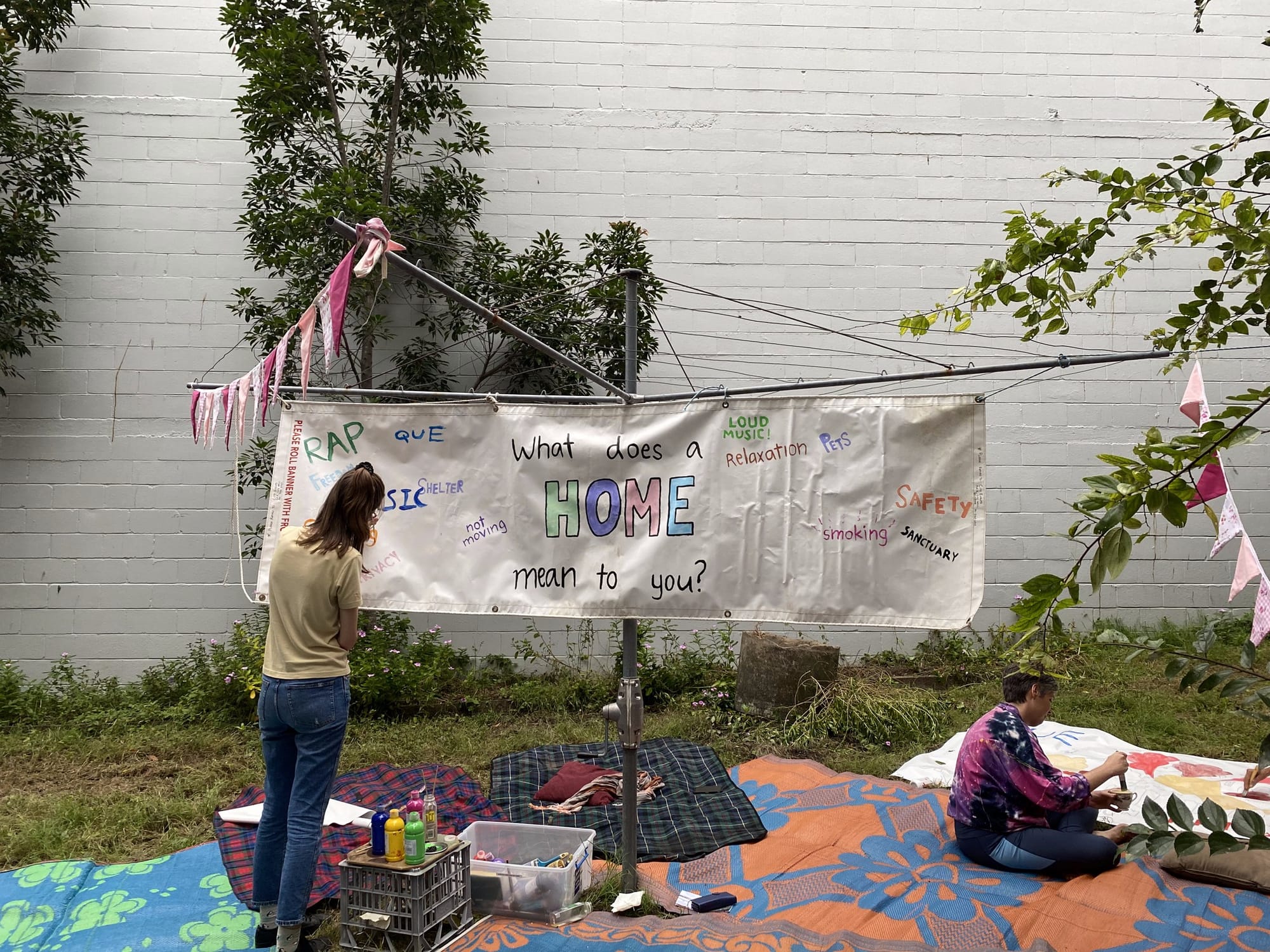

As part of the campaign, we organised an anti-eviction party to help Bernie's neighbours understand what was happening and build community solidarity in case blockading became necessary
They offered Bernie $5000 to cover his relocation costs. Tenants aren't usually entitled to any financial compensation when being evicted, so this was already a big concession to extract. But in an over-heated rental market, $5000 wasn't going to guarantee Bernie long-term stability. With support from a community of activists, he held out for more.
In the end, the developers – to their credit – agreed to compensate Bernie with a very significant sum of money to ensure he didn't become homeless (I'm keeping it confidential to respect his privacy, but it would be enough to cover his rent on a new, more expensive rental for several years). It was small change for a major apartment developer, but life-changing for Bernie.
This was the most successful anti-eviction campaign I've been involved in regarding a private rental. Most importantly, it showed a group of renters' rights advocates that if we're willing to stand up and push back, we can extract significant concessions that materially improve a tenant's situation, even if we can't stop every eviction altogether. It helped lay the foundations for much broader renters rights struggles, which I'm optimistic will have a massive impact on Queensland politics in the coming years.
Stopping the Gabba redevelopment and saving local parks and schools
It’s easy to forget that just a couple of years ago, almost everyone in Brisbane was convinced that the Gabba Stadium was definitely going to be demolished (and the neighbouring East Brisbane State School closed down) to make way for a new Olympic stadium. The Olympics juggernaut was accelerating. Decisions had been locked in, and government ministers were talking about the Gabba demolition and rebuild with such certainty that it was having a significant impact on property prices and the timing of other major infrastructure projects. Both the AFL and cricket codes were planing for displacement and investing resources into exploring alternative venue options.
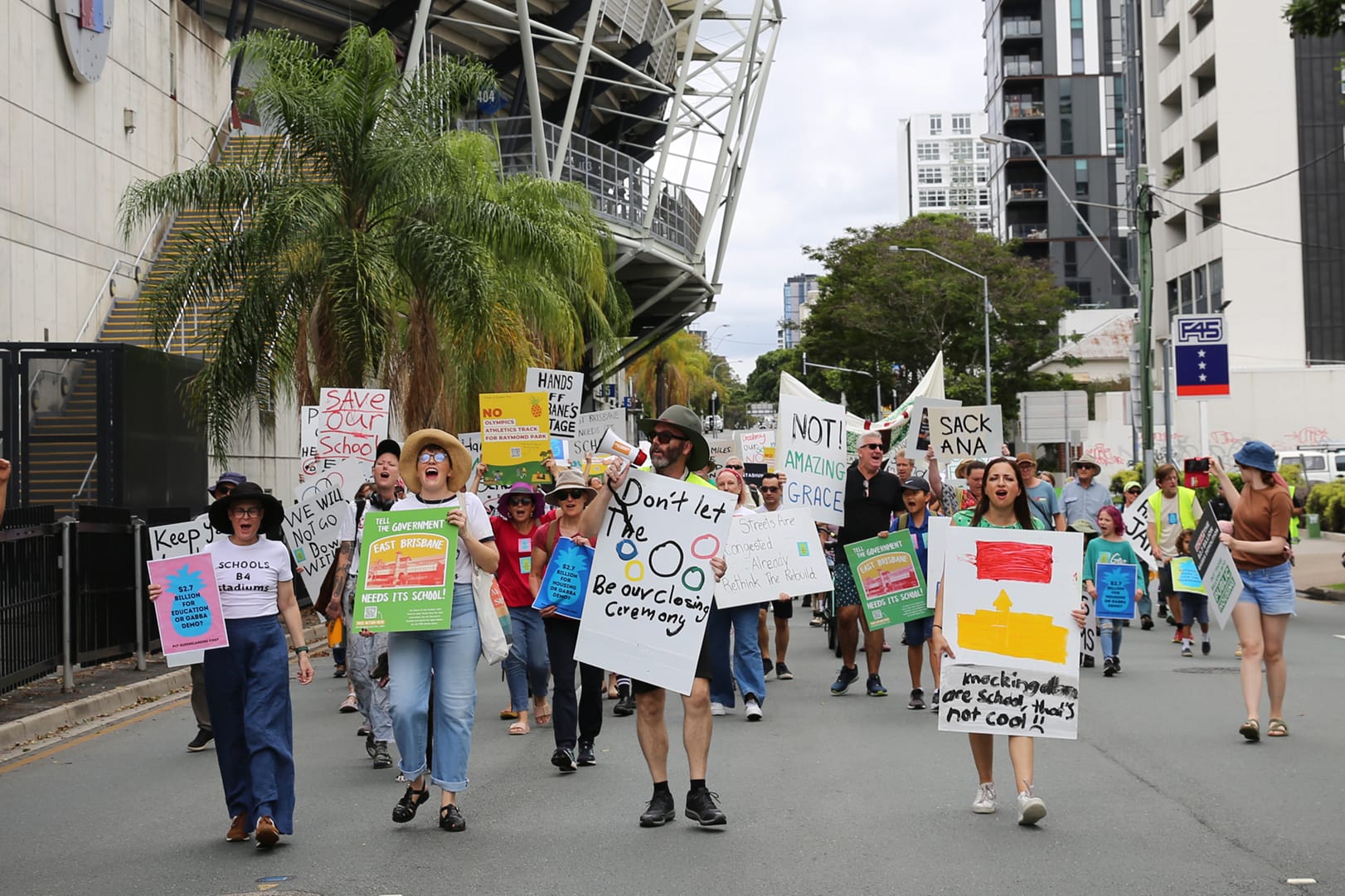
Yet as we now know, a huge community campaign (which the Greens should take a lot of credit for spearheading) transformed the Queensland political landscape, turning public opinion so strongly against the Gabba rebuild that even the LNP eventually realised they could make political mileage by opposing it, leaving Labor with very few allies in support of the project. The campaign used a wide range of tactics, from petitions to parliamentary submissions to protests on the streets around the stadium and outside government offices in the CBD (including a small but feisty weekday morning protest that forced a partial lockdown of 1 William St, preventing politicians and public servants from using the main building entrances). We turned what could easily have remained a localised issue into something that voters across the state were angry about.
@jonnosri Snap Olympics protest outside CBUS foyer this morning.
♬ original sound - Jonathan Sriranganathan
To flip the tables on a $3 billion+ project that had so much political support behind it is pretty huge, particularly when most of the negative impacts of the demolition and rebuild were localised within the safe Greens electorates of Griffith, South Brisbane and the Gabba Ward.
I do wonder whether the LNP would have turned against the project if the Greens weren’t also presenting a serious threat in the LNP-held Coorparoo ward leading up to the March 2024 local council elections. Personally I think our decision to make the stadium demolition a key focus of the council election campaign was a crucial factor leading to LNP mayor Adrian Schrinner shifting his position and publicly opposing the project. He was clearly worried about losing votes across the city because of his perceived support for the Gabba rebuild. The Greens didn't win Coorparoo Ward or the mayoralty this time around, but we won the battle against the Gabba Olympics.
This campaign is a great example of the symbiotic and complementary roles that grassroots activism and electoral pressure can play in pushing for positive change. It’s also a good reminder that the Queensland political establishment can still be forced to pull support for a major project even if it’s within a seat that the major parties have little hope of winning back.
Save Toondah Harbour
The campaign to protect internationally significant coastal wetlands at Cleveland from Walker Corporation’s massive private residential development proposal lasted many years and multiple election cycles. Despite the area’s Labor and Liberal politicians being firmly behind the project, and disappointingly high levels of apathy (perhaps arising in part from a sense of powerlessness) among many Redlands locals, the campaign eventually generated so much national public concern that federal environment minister Tanya Plibersek stepped in to stop the development, even after it had secured state government support.
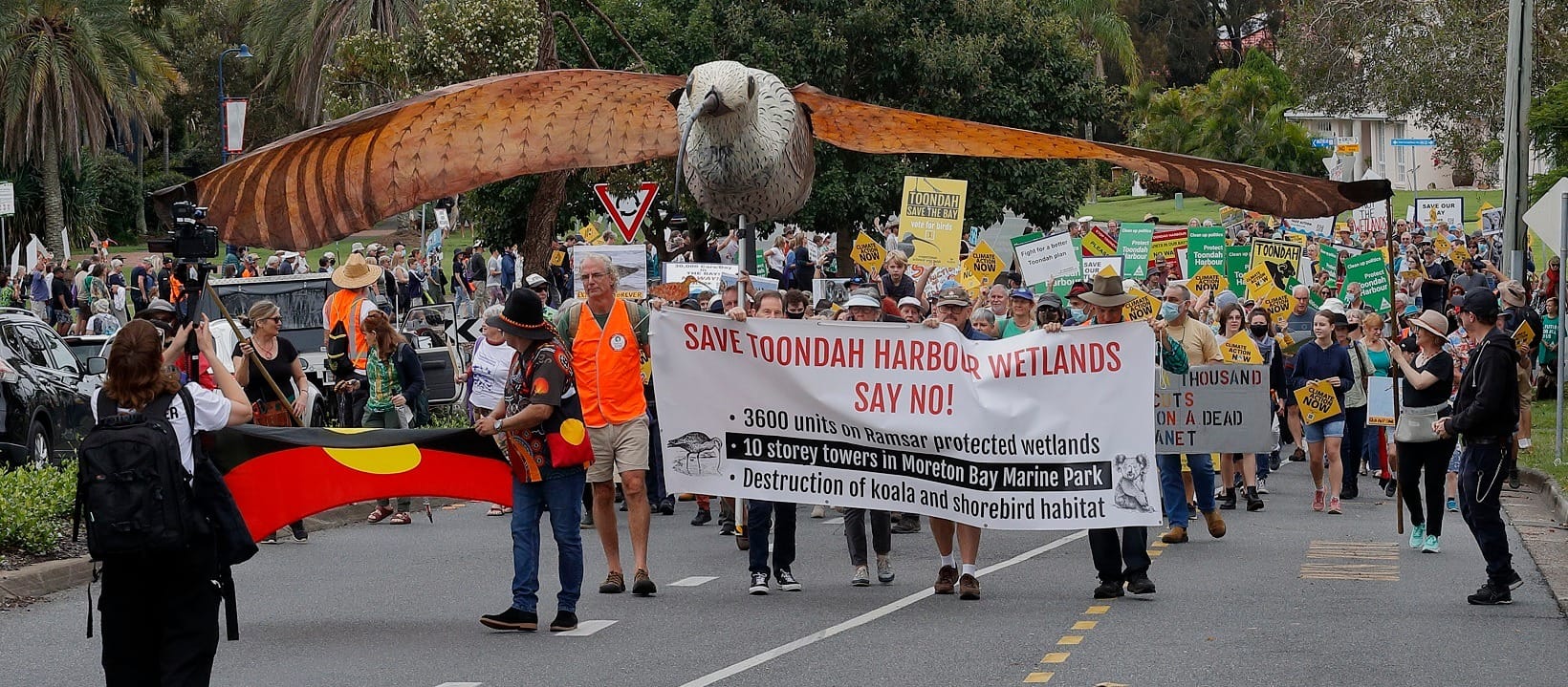
I think a lot of environmentalists didn’t celebrate this victory as much as we could have, perhaps in part because the minister’s decision was overshadowed by her ongoing support for new coal mines. But Toondah Harbour represents one of Australia’s largest and most successful community campaigns against an ecologically destructive residential development project in recent decades.
By activating concerned environmentalists across the country – including, notably, bird-watching community networks – Save Toondah campaigners circumvented their decidedly unhelpful Labor and Liberal state and federal MPs in the Redlands region, forcing politicians in Sydney and Canberra to take notice and intervene.
It was an especially ridiculous and destructive development proposal, so the fact that residents had to organise a campaign at all is an indictment of our political system, and particularly our planning laws; Queensland Labor should never have supported the project to begin with. But at least the ministerial rejection has drawn a new line in the sand that should make developers think twice before having a crack at other sites of such major ecological significance.
50 cent public transport fares
While I’ve personally organised a couple of protests about the cost of public transport, and various groups have advocated for free or cheaper fares over the years (usually facing stiff resistance from Labor), Queensland hasn’t had a widespread active grassroots campaign on this issue. Instead, fare hike frustrations have been channelled more directly into election campaigning for the Greens, who’ve generally led with public transport affordability as a top issue for local and state campaigns.
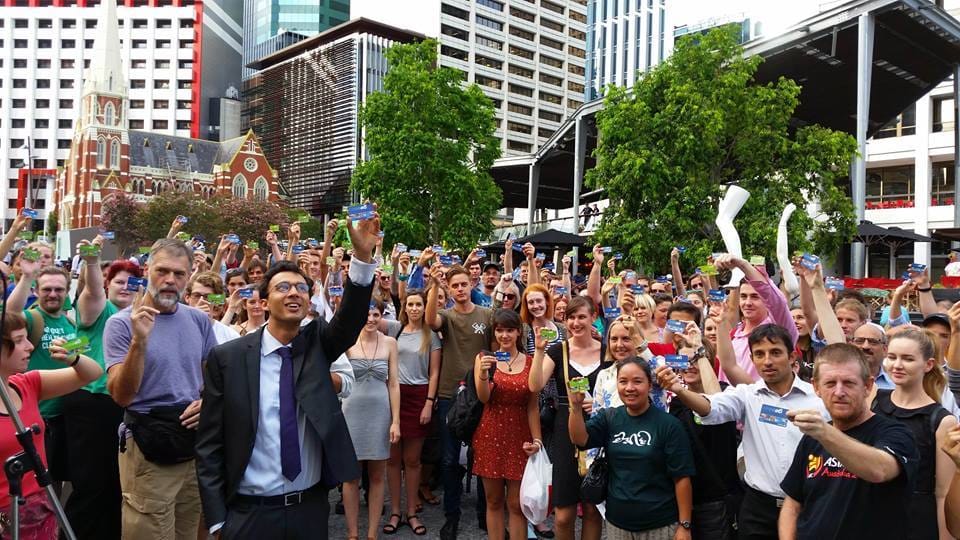
As I’ve written about elsewhere, Queensland’s Labor government didn’t just spontaneously decide to spend hundreds of millions of dollars dropping fares to fifty cents out of the blue. A lot of volunteer energy has gone into doorknocking, organising forums and building a groundswell of momentum around the high cost of fares to shift Queensland's political commonsense. The announcement came just a few months after the March 2024 local government elections, where ‘free and frequent public transport’ was a key message on Greens campaign materials and doorknocking scripts, and the party achieved its highest primary vote in the city’s history. While not necessarily fitting a narrower definition of 'protest,' this work of shifting public opinion and building political pressure should still be understood as a form of direct action.
Cheaper fares now look likely to be implemented permanently. This is a massive win for advocates of affordable public transport. Of course, Labor spokespeople will never admit that Greens pressure had anything to do with this change. Labor is eager to maintain the narrative that the Greens are politically irrelevant, because it has more-or-less run out of other arguments to appeal to progressive voters.
When I look back on Queensland’s recent political history, fifty cent public transport fares was definitely on a lot of people’s “it’ll never happen” bingo card. So it’s an important reminder that good things are possible if we’re willing to fight, and that electoral pressure can achieve big wins if a party like the Greens is willing to spotlight an issue as part of election campaigns.
Activism works
As mentioned at the outset, I could list many more recent Brisbane examples where grassroots direct action of one kind or another has achieved immediate positive outcomes on the ground. I can also point to several examples where lots of people have been concerned about an issue or project, but haven't been willing to escalate to disruptive protest, and the status quo remained unchanged or the destructive project went ahead.
The scale of protest and advocacy needed to achieve victory tends to be proportional to the significance of the change you're demanding, and the corporate interests you're challenging. Securing council investment in a new pedestrian crossing might only require a couple of protests and a few hundred petition signatures, whereas one street march or rally won't be enough to shift federal government policy in a context where the corporate sector profits from the status quo.
However as writers like Scott Ludlam have highlighted, we can't know for sure which campaigns will strike a chord and grow into something massive and successful, and which ones will fizzle out. With so many variables at play, there's no consistent, linear relationship between the scale or style of activism and how quickly we secure a win. The important thing is to at least try.
In reflecting on all the wins described above, I'm struck by how the government concessions and reversals usually only go just far enough to placate or neutralise immediate concerns and demobilise a growing community campaign, without addressing the underlying structural injustices that people are really worried about and grappling with. I can't help but wonder whether, by creating community campaigns that focus narrowly on discrete issues, then moving on with our lives when we either 'win' or 'lose' that particular struggle, we forego opportunities to build larger, broader coalitions and push for deeper, systemic transformation. What if instead of primarily advocating and protesting about specific policies or projects, we focussed more on fostering broader, multi-faceted movements of resistance that could challenge and change the entire system?
That question aside, my experiences have shown me that protest and direct action is worthwhile and effective. The next time someone tells you that protest doesn't work, show them this article, and remind them that the first step to achieving positive change is believing that it's possible.
We don't have to settle for the status quo.

Thanks heaps for reading. Please take a moment to share this article on social media or forward it to friends via email. As you can imagine, pulling resources like this together takes a fair bit of work. If you appreciate writing like this, please consider supporting it by signing up for a paid subscription...


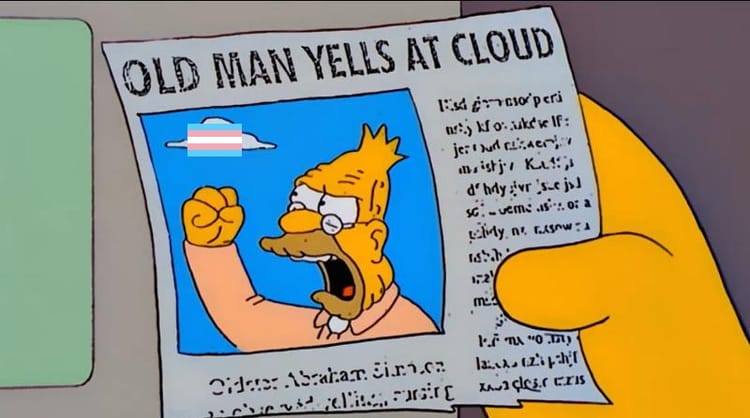

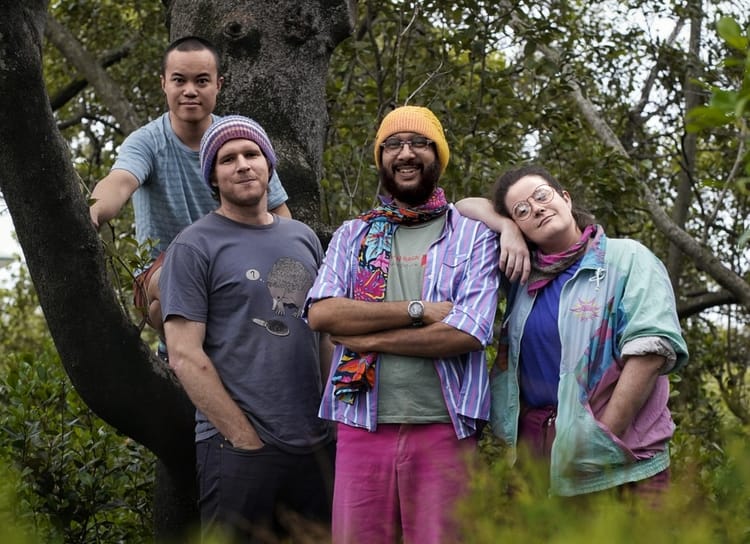
Member discussion